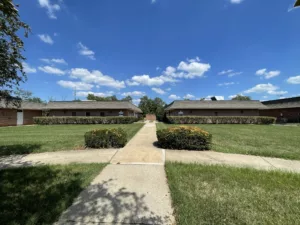Formal Living Room. Formal Dining Room. If you are like me, these are dumping grounds for my kids’ backpacks, musical instruments, returns for Amazon, and are unused for their intended purpose most of the year.
In recent years, a new housing market trend has emerged in the industry as builders are increasingly turning their attention to smaller homes. This change is not merely a design preference by humans like us, but a response to the soaring costs of construction. As the price of raw materials, labor, and land continues to rise, builders and homeowners alike are reevaluating the concept of space, finding innovative ways to create functional and aesthetically pleasing dwellings within a more modest footprint.
The ‘Tiny House’ is an example of this trend. However, due to many zoning restrictions, this has not easily become a widespread result. More efficient medium-sized homes are fast outpacing the ‘Mega Mansions’ that were prevalent prior to the 2008 recession.
The Cost Challenge
One of the primary drivers behind the trend toward smaller homes is the escalating cost of construction. The housing market has been grappling with rising prices of materials such as lumber, steel, and concrete. Additionally, skilled labor shortages have led to increased wages for construction workers. These factors, coupled with the ever-increasing cost of land, have made building larger homes financially challenging for both builders and prospective homeowners.
The average cost for a garden-style apartment complex can range from $180-$220 SF while podium-style steel frame buildings served by elevators can run $300-$350 SF.
In response to this economic reality, builders are adopting a less-is-more approach, focusing on optimizing space and embracing efficient design principles. Smaller homes not only require fewer materials and labor hours, but they also allow for more creative and resourceful use of available space.
The Rise of Minimalism
As builders adapt to economic constraints, a parallel movement is gaining momentum among occupants – the embrace of minimalism. People are reevaluating their lifestyles and discovering the benefits of living in smaller spaces. This shift is not just about downsizing; it’s a conscious choice to prioritize quality over quantity, valuing experiences and connections over material possessions.
No need for those formal spaces- smaller homes often encourage a more mindful approach to living, prompting residents to carefully curate their belongings and prioritize multifunctional furniture. This minimalist mindset is reshaping the way we view and use our living spaces.
Multifamily Owners’ Benefit
As people become adaptive to smaller spaces, this has made it easier to retain tenants. The need for more space is the reason for many apartment dwellers to purchase housing in years past. The trend towards adapting to smaller living spaces has retained more renters in the market.
This is one of the reasons that you hear of a ‘rise in renters’ over the US, and the trend towards single-family rental townhomes, or ‘Build to Rent’ communities. These are popular and retain tenants on a long-term basis because they provide a reasonable amount of space to residents who have adapted to smaller dwellings.
The desire for a backyard and front door is an amenity that townhome renters love to have and helps to retain them over the long term. Townhome rentals have a significantly lower turnover, less than 29%, versus 50-55% in apartments.
Conclusion
The shift toward smaller homes is a response to the economic challenges facing the construction industry. While rising costs have necessitated a reevaluation of traditional home sizes, the trend has also given rise to a new way of living—one that prioritizes functionality, efficiency, and sustainability. As builders and residents continue to adapt to this changing landscape, the era of smaller homes is poised to reshape the housing market, offering viable and appealing alternatives to owners and renters alike.
Think “better space”, not “more space”.
If you would benefit from a new perspective on how to maximize your rental portfolio, contact us to gain strategies to increase your returns.






